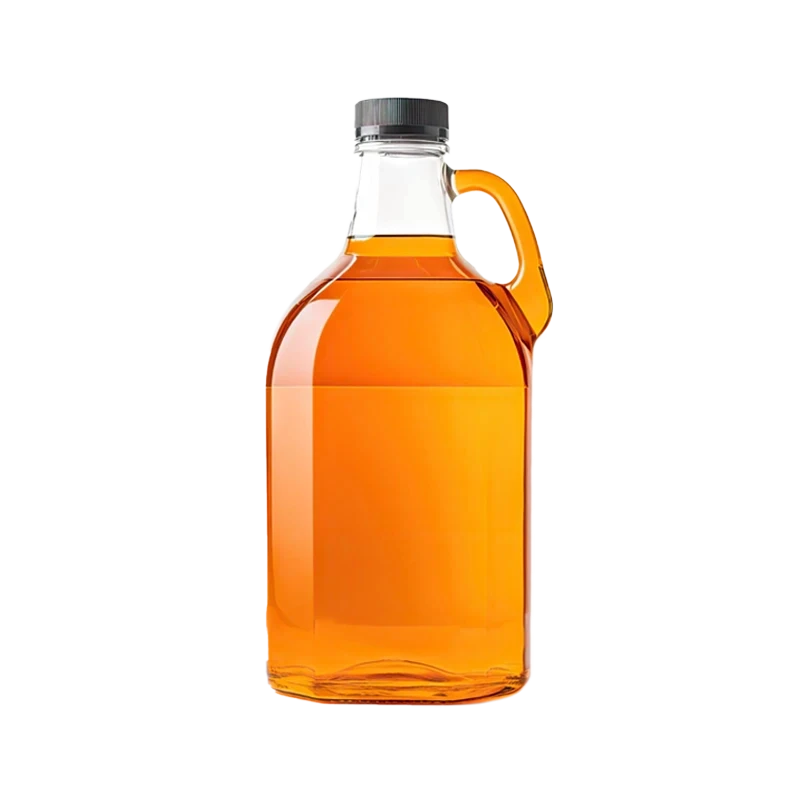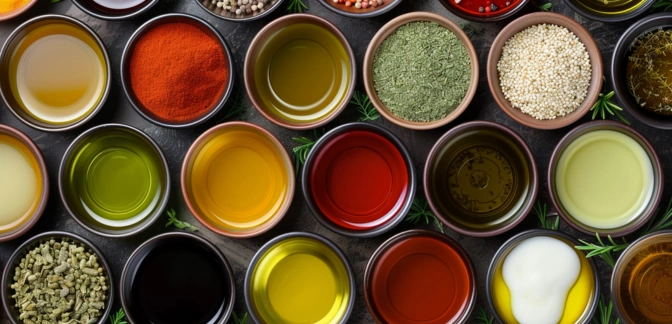Mustard Oil — Nutrients, Health Benefits, And Shopping Tips

Written by Listonic Team
Last update on September 4, 2024
Nutrition facts
Nutrition facts
Amount per 100 g
Calories
🔥 884 kcal
| Nutrition per: 100 g | Value | % Daily Value* |
|---|---|---|
| Carbs | 0 g | - |
| Fiber | 0 g | - |
| Sugars | 0 g | - |
| Glycemic Index | 0 | - |
| Protein | 0 g | - |
| Sodium | 0 mg | - |
| Total Fat | 100 g | 128.21% |
*The % of Daily Value (DV) tells you how much a nutrient in a serving of food contributes to a daily diet. 2,000 calories a day is used for general nutrition advice.
Did you know?
Health benefits
- Rich in healthy fats, particularly monounsaturated and polyunsaturated fats, which support heart health and provide energy.
- Contains antioxidants such as Vitamin E, which help protect the body from free radicals and reduce inflammation.
- May support heart health by improving cholesterol levels and reducing blood pressure.
- Has antimicrobial properties, which can help fight off infections and improve overall health.
- Supports skin health when used topically, providing moisture and reducing inflammation.
Health risks
- High erucic acid content which, when consumed in large amounts, has been linked to heart issues and other health concerns, leading to restrictions on mustard oil for culinary use in some countries.
- Potential for digestive discomfort such as stomach upset or diarrhea, particularly when consumed in large quantities or by individuals not accustomed to its strong flavor.
- Risk of allergic reactions in some individuals, particularly those allergic to mustard, causing symptoms like itching, swelling, or difficulty breathing.
- Potential for contamination with harmful substances if the mustard oil is not properly processed or sourced from a reputable supplier.
How to choose mustard oil
Mustard oil should be clear with a golden yellow color, indicating it is pure and unadulterated. The aroma should be strong and pungent, characteristic of mustard oil, which is prized for its intense flavor.
Avoid mustard oil that smells rancid or has a dull, dark color, as these are signs of oxidation or poor storage conditions. Quality mustard oil should be potent, ideal for cooking and imparting a rich, authentic taste to dishes.

How to store mustard oil
Mustard oil should be stored in a cool, dark place, preferably in a tightly sealed bottle. Keeping it away from light and heat preserves its flavor and shelf life. Properly stored, mustard oil can last for up to six months.
Exposure to heat and light can cause mustard oil to go rancid quickly. Avoid storing it near stoves or windows where temperatures fluctuate. Ensure the bottle is always tightly closed to prevent oxidation and maintain its quality.
✅ Extra Tip
How long does it last?
Mustard oil can last for 1-2 years when stored in a cool, dark place. Once opened, it is best to consume it within 6 months for optimal quality. Proper storage helps maintain its flavor and nutritional value.
What to do with leftovers?
Leftover mustard oil can be used in a variety of culinary and non-culinary ways. In the kitchen, mustard oil adds a sharp, pungent flavor to dishes like pickles, marinades, and sautéed vegetables. It’s commonly used in Indian cuisine for cooking and frying, especially in dishes where a strong flavor is desired.
Beyond cooking, mustard oil has several traditional uses. It is often used in massage therapy to improve circulation and relieve muscle tension due to its warming properties. Mustard oil can also be applied to the scalp to promote hair growth and strengthen hair. Additionally, it can be used as a natural remedy for skin issues, such as acne or dryness, although it should be used with caution on sensitive skin. Mustard oil can also be applied to wooden utensils and cutting boards as a natural preservative, helping to maintain their condition.
👨⚕️️ Medical disclaimer
Discover products from other categories
Listonic Team
Fact-checked
Our editorial team checked this article to make sure it was accurate at the time of publishing it.
Get the top-rated shopping list app

mustard oil
1 piece







